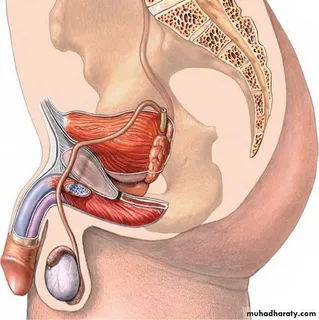Introduction
A vasectomy is a simple, safe, and highly effective form of male sterilization that offers permanent contraception for those who are sure they do not want children in the future. While the idea of undergoing surgery on such a sensitive area can be intimidating, understanding what happens on the actual day of the procedure can ease anxiety and help patients prepare physically and mentally.
In this detailed guide titled “Vasectomy and What to Expect on Surgery Day,” we’ll walk you through every step of the vasectomy day—from what to wear and eat in the morning, to how the procedure is performed, and what to expect in terms of pain, communication, and immediate recovery. If you or someone you love is scheduled for a vasectomy, this article provides the practical and emotional insights needed to face surgery day with confidence.
Understanding the Vasectomy Procedure
A vasectomy is a minor surgical procedure in which the vas deferens—the tubes that carry sperm from the testicles—are cut or sealed to prevent sperm from mixing with semen. While sperm production continues, the sperm can no longer leave the testicles and fertilize an egg.
There are two primary types of vasectomy:
- Conventional vasectomy: Involves two small incisions in the scrotum.
- No-scalpel vasectomy: A minimally invasive method that uses a small puncture instead of cuts, leading to quicker recovery.
Regardless of the technique, surgery day protocols are largely the same.
Pre-Surgery Preparation: What to Do the Night Before
1. Confirm Instructions with Your Doctor
Before the day of your vasectomy, your urologist or surgeon will provide specific instructions. Make sure you:
- Understand when to arrive
- Know whether someone needs to accompany you
- Ask if you need to stop medications (especially blood thinners)
2. Shave and Shower
Most clinics will ask patients to shave the scrotal area the night before or the morning of the procedure. This helps reduce the risk of infection.
Showering thoroughly using antibacterial soap is also recommended. Wear clean, comfortable underwear and pants.
3. Arrange Transportation
You should not drive yourself home after a vasectomy due to the sedatives or local anesthetic used. Arrange for a friend, spouse, or family member to drive you.
4. Eat Light (if permitted)
In most cases, a light meal is allowed unless sedation is used, in which case fasting may be required. Clarify this detail with your provider beforehand.
What to Wear and Bring
Dress for comfort and ease of movement. Here’s a quick checklist:
- Loose-fitting sweatpants or athletic shorts
- Supportive snug-fitting underwear (briefs, not boxers) to wear after surgery
- Valid ID and insurance card
- Any required paperwork from the clinic
- A calm, relaxed mindset
Leave valuables and tight jeans at home.
Arriving at the Clinic: Check-In Process
Upon arrival, you’ll be checked in by the administrative staff. If a co-pay is due, it may be collected before the procedure. You’ll then be guided to the waiting area or pre-op room.
Expect to:
- Answer a few last-minute health screening questions
- Have your vitals checked (blood pressure, heart rate, etc.)
- Speak briefly with the urologist or surgeon
This is a great time to voice any final questions or concerns.
Anesthesia and Numbing
Most vasectomies are performed under local anesthesia, meaning you’ll be awake, but the area will be completely numbed.
Here’s how it usually goes:
- A small needle is used to inject anesthetic into the scrotal skin.
- A slight sting or pinch may be felt.
- Numbing happens quickly and lasts throughout the procedure.
In rare cases, oral sedation or mild IV sedation may be used for very anxious patients.
The Vasectomy Procedure: Step-by-Step
The entire procedure typically takes 15 to 30 minutes.
Step 1: Accessing the Vas Deferens
In a no-scalpel vasectomy, the surgeon makes a small puncture or opening in the scrotum. For conventional vasectomy, two tiny incisions are made.
Step 2: Cutting and Sealing
The surgeon isolates the vas deferens, cuts it, and either:
- Seals the ends with heat (cauterization),
- Ties them off,
- Or adds tiny clips.
Some surgeons also remove a small segment to increase effectiveness.
Step 3: Closing the Site
With a no-scalpel technique, no stitches are needed. With traditional surgery, dissolvable stitches may be used.
The area is cleaned and covered with a small bandage.
During the Procedure: What You’ll Feel
Even though the area is numbed, you may experience:
- Tugging or pulling sensations
- Pressure around the testicles
- Mild discomfort when the vas deferens are manipulated
Most patients report little to no pain, and the short duration makes it manageable.
After the Procedure: Immediate Post-Op Experience
Once the procedure is complete, you’ll be monitored for 15–30 minutes. If no complications arise, you’ll be sent home with clear instructions.
You may feel:
- Soreness in the groin
- Mild swelling or bruising
- Sensitivity in the testicles
All of this is normal and should begin to improve after 48–72 hours.
Aftercare Instructions
1. Apply Ice Packs
Use a cold pack (wrapped in cloth) on the scrotum for 20 minutes every hour during the first 24 hours to reduce swelling.
2. Wear Supportive Underwear
Tight briefs or a jockstrap will help reduce movement and pain.
3. Rest for 24–48 Hours
Avoid strenuous activity, heavy lifting, and standing for long periods.
4. Avoid Sexual Activity
Refrain from ejaculation for at least 5–7 days to allow healing.
5. Take Pain Medication
Over-the-counter painkillers like acetaminophen or ibuprofen are usually sufficient.
Going Home: What to Expect Emotionally
Many men feel relief after the procedure is done. You may also experience:
- A sense of finality (especially if you’re done having children)
- Anxiety about post-op pain (usually unfounded)
- Embarrassment discussing it—totally normal but unnecessary
Talk to your partner about how you’re feeling emotionally and physically.
Warning Signs to Watch For
Although rare, complications can happen. Contact your doctor if you experience:
- Excessive swelling, bleeding, or pain
- Signs of infection (fever, redness, pus)
- A hard lump that persists beyond a few weeks
- Blood in the semen (lasting more than a few ejaculations)
Follow-Up and Semen Testing
IMPORTANT: A vasectomy is not immediately effective. It takes time to clear existing sperm from the system.
Your doctor will schedule a follow-up semen analysis, usually around 8–12 weeks post-op. Until your semen tests show zero sperm, use other birth control.
Many clinics require two negative sperm samples before declaring success.
Common Questions Men Ask on Surgery Day
Will I be in pain?
Not during the procedure. Local anesthesia numbs the area well. Afterward, mild soreness and discomfort are expected but manageable.
How long before I can go back to work?
Many men take 1–2 days off. Desk jobs can resume quickly, while physical jobs may require up to a week of rest.
What if I change my mind later?
Vasectomy reversal is possible but not guaranteed. It’s expensive and less effective with time. Only get a vasectomy if you’re confident about not wanting future children.
Final Thoughts: Confidence Through Preparation
Knowing what to expect on surgery day makes all the difference in reducing anxiety and ensuring a smooth experience. With a short procedure, minimal downtime, and a low risk of complications, vasectomy remains one of the safest and most effective forms of permanent contraception for men.
By reviewing this guide to Vasectomy and What to Expect on Surgery Day, you’re taking an informed step toward reproductive control and health autonomy. Whether you’re pursuing the procedure for personal reasons, family planning, or mutual decision-making with your partner, you now know what lies ahead—and how to handle it with confidence.
Frequently Asked Questions (FAQs)
Q1: Can I drive home after a vasectomy?
No. Even if only local anesthesia is used, it’s recommended to have someone drive you home. You may feel groggy or sore afterward, making driving risky.
Q2: Will I need stitches?
Not usually. If you’re having a no-scalpel vasectomy, stitches are not required. If a traditional technique is used, dissolvable stitches may be applied.
Q3: How long should I wait before returning to exercise?
Wait at least one week before resuming exercise, especially activities that involve running, heavy lifting, or contact sports.


